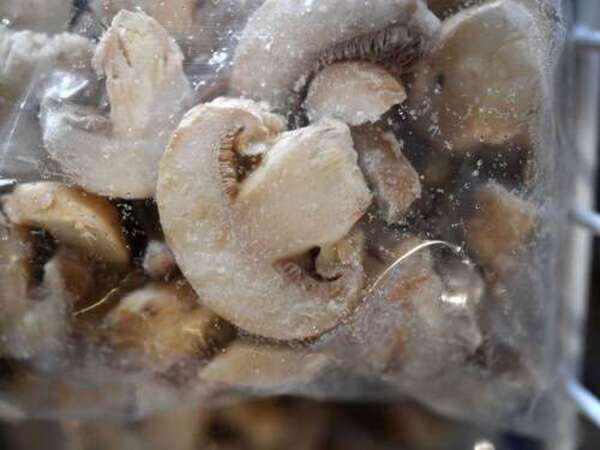Mushrooms are a popular ingredient in various dishes, offering rich flavors and textures. Whether you’re cooking a stir-fry, preparing a pasta, or making a soup, mushrooms are a versatile and essential addition. But what happens if you have a surplus of mushrooms and want to preserve them for later use? Can you freeze mushrooms, and if so, how can you do it without compromising their flavor and texture?
In this comprehensive guide, we’ll explore how to properly freeze mushrooms, how to thaw and cook them after freezing, and what to expect from frozen mushrooms. We’ll also give tips for the best freezing techniques to maintain their quality.
Can You Freeze Mushrooms?
Yes, you can freeze mushrooms, but there are important steps to follow in order to preserve their flavor and texture. Raw mushrooms have high water content, which can lead to a mushy texture when frozen and thawed. To prevent this, it’s recommended to blanch or sauté the mushrooms before freezing. This helps maintain their structure and prevents them from becoming too watery after thawing.
Why Freeze Mushrooms?
Freezing mushrooms is an excellent way to extend their shelf life and reduce waste. Fresh mushrooms are perishable and only last for a few days in the fridge. By freezing them, you can store them for months and use them as needed. Freezing is especially useful when you’ve bought mushrooms in bulk, harvested a lot from your garden, or found a great deal on mushrooms at the store.
How to Freeze Mushrooms
Freezing mushrooms properly requires a bit of preparation. Follow these steps to freeze your mushrooms successfully:
- Select Fresh Mushrooms
Choose fresh mushrooms that are firm, dry, and free from blemishes. Avoid mushrooms that are slimy or have visible signs of aging. - Clean the Mushrooms
Gently wipe the mushrooms with a damp cloth or use a soft brush to remove any dirt. Avoid soaking mushrooms in water, as they can absorb moisture and become soggy when frozen. - Slice or Leave Whole
You can freeze mushrooms either whole or sliced. Sliced mushrooms freeze more easily and take up less space in your freezer, while whole mushrooms might be more convenient for certain recipes later on. Choose what works best for your intended use. - Blanching the Mushrooms
The key to freezing mushrooms without compromising texture is blanching. Here’s how to do it:- Bring a large pot of water to a boil.
- Add the mushrooms to the water and blanch for 2-3 minutes. This quick process helps preserve the mushrooms’ texture and flavor.
- After blanching, immediately transfer the mushrooms to a bowl of ice water to stop the cooking process.
- Drain the mushrooms thoroughly and pat them dry with a paper towel to remove any excess moisture.
- Pre-Freezing (Optional but Recommended)
To avoid the mushrooms clumping together, spread them in a single layer on a baking sheet and place them in the freezer for 1-2 hours. Once they are frozen individually, you can transfer them to a storage bag or container. This method helps keep the mushrooms from sticking together when stored. - Packaging the Mushrooms
After pre-freezing, pack the mushrooms into freezer-safe bags or airtight containers. Remove as much air as possible to prevent freezer burn. Label the bags with the date of freezing to help keep track of their age.
How Long Can You Freeze Mushrooms?
Frozen mushrooms can last for up to 12 months in the freezer if stored properly. However, it’s best to use them within 6 months for the best flavor and texture. After that, they may lose some of their taste and quality, though they are still safe to eat.
Thawing and Cooking Frozen Mushrooms
When you’re ready to use your frozen mushrooms, it’s important to know how to thaw and cook them correctly to maintain their quality.
- Thawing Frozen Mushrooms
It’s generally best not to thaw mushrooms before cooking, as they can release moisture and become mushy. Instead, cook the mushrooms directly from frozen. For recipes like soups, stews, or stir-fries, you can add frozen mushrooms directly to the dish without thawing. - Sautéing Frozen Mushrooms
If you plan to sauté mushrooms, heat a pan over medium heat and cook the frozen mushrooms with a bit of oil or butter. Allow the mushrooms to cook for a few minutes until the moisture evaporates and they begin to brown. This method works well for mushrooms that will be added to pasta, pizza, or other dishes where texture matters. - Using Frozen Mushrooms in Soups and Sauces
Frozen mushrooms are ideal for use in soups, stews, sauces, and casseroles, where their texture won’t be as noticeable. Simply toss them into your dish while cooking, and let them absorb the flavors of the other ingredients.
What to Expect from Frozen Mushrooms
Frozen mushrooms may not have the same texture as fresh mushrooms, especially when used raw. They tend to become softer and release more moisture once thawed. However, when cooked, their flavor remains mostly intact, and they can add depth and richness to many dishes.
Frozen mushrooms work best in cooked recipes, and while they may not be suitable for fresh salads or as a topping for sandwiches, they shine in casseroles, sauces, and soups.
Tips for Freezing and Using Mushrooms
- Don’t Freeze for Raw Use
Freezing mushrooms raw without blanching or cooking them first can result in a mushy texture once thawed. Always blanch or sauté first for the best results. - Pre-Freezing Prevents Clumping
If you’re freezing large quantities, pre-freezing your mushrooms on a baking sheet prevents them from sticking together, making it easier to take out only the amount you need. - Use Within the Year
For the best flavor and texture, use frozen mushrooms within 6 months. While they remain safe to eat for up to 12 months, their quality will degrade over time. - Consider Sautéing Before Freezing
If you want to enhance the flavor, you can sauté mushrooms in butter or oil before freezing them. This adds a richer taste and helps maintain their texture when thawed.










